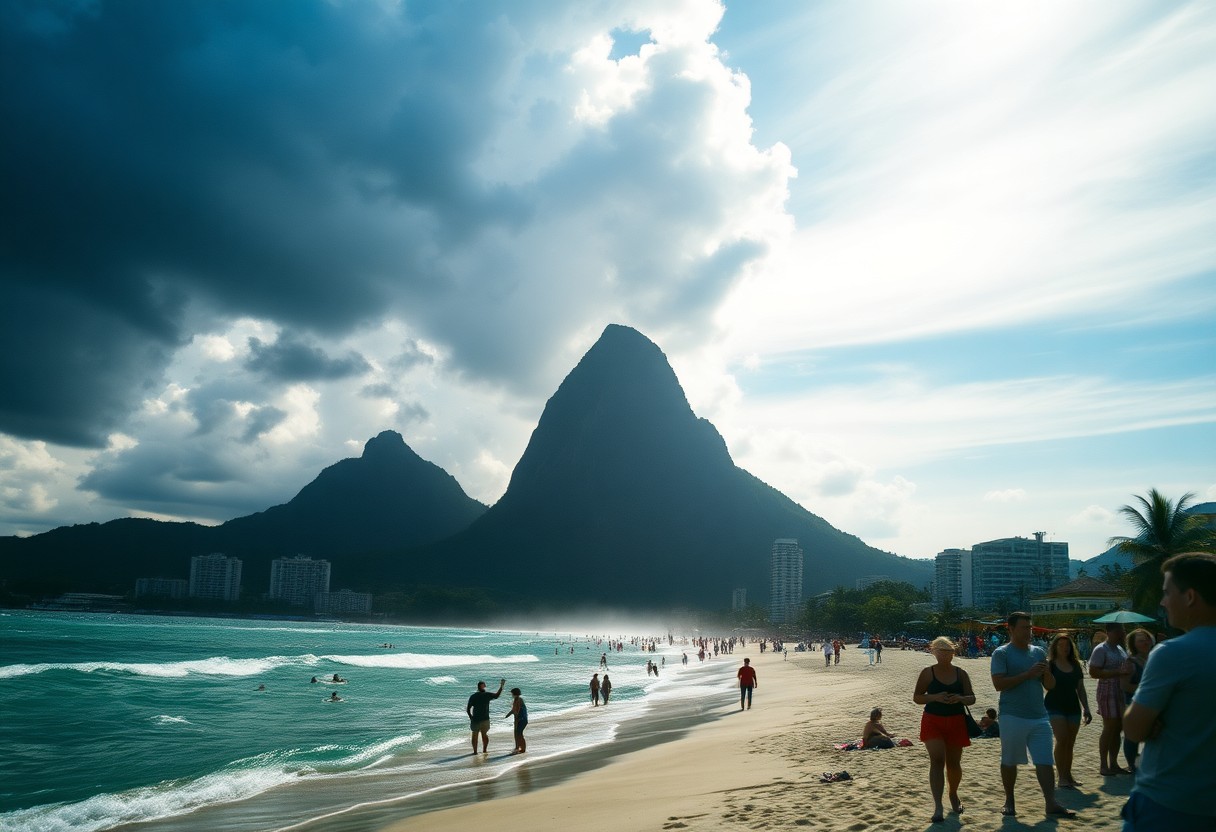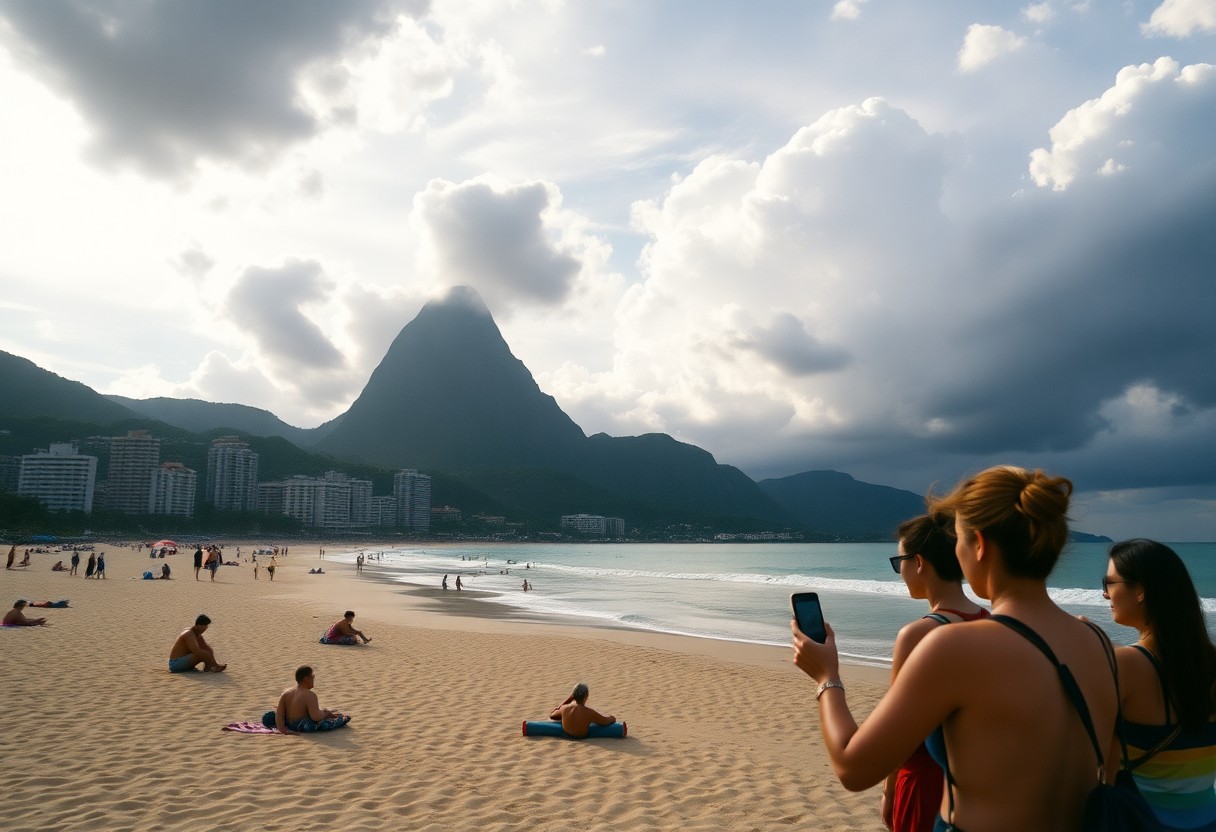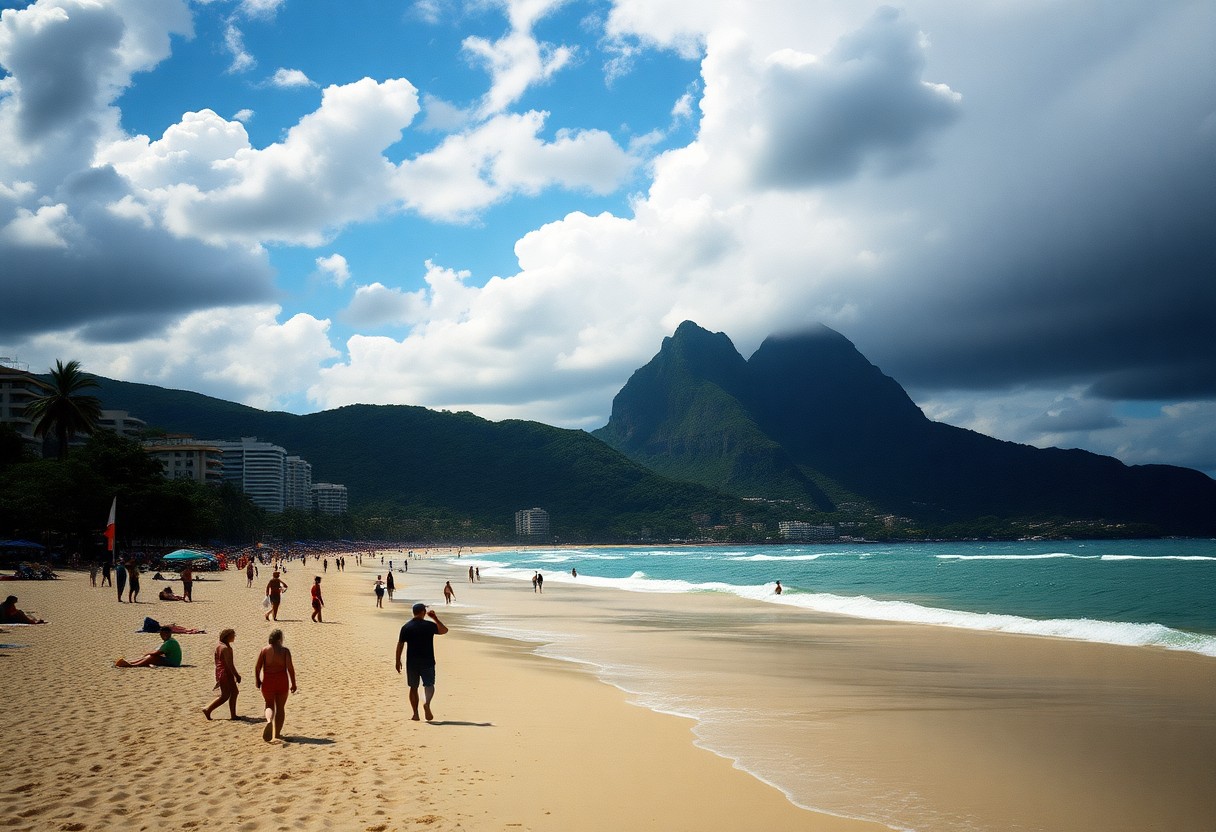As you embark on your thrilling adventure to Rio de Janeiro, understanding the optimal times to visit can greatly elevate your travel experience. This lively city boasts warm temperatures year-round, yet each season presents unique features that may impact your travel decisions. The vibrant summer months, spanning from December to March, are filled with colorful Carnival celebrations, but they also bring heavy rainfall and significant crowds. Your ideal travel timing will largely depend on your individual preferences: for beach enthusiasts seeking sunbathing and water activities, the spring months from September to November offer mild temperatures and fewer tourists. Conversely, if you’re a budget-conscious traveler, the winter months (June to August) might provide more economical options. By aligning your travel itinerary with the local climate and seasonal festivities, you can maximize your enjoyment while in Rio.
Explore Rio de Janeiro’s Diverse Weather Patterns Throughout the Year
Before you finalize your travel plans for Rio de Janeiro, it’s critical to grasp the city’s tropical climate features. The warm temperatures generally range from 68°F to 88°F (20°C to 31°C) throughout the year. You will encounter two main seasons: a warm and humid summer from December to March, and a cooler, drier winter from June to September. Each season brings its own set of advantages and challenges, making it essential to select the ideal time for your visit based on your preferred activities and comfort levels.
Comprehensive Seasonal Temperature Analysis for Efficient Travel Planning
| Season | Temperature Range |
|---|---|
| Summer (Dec-Mar) | 77-88°F (25-31°C) |
| Winter (Jun-Sep) | 68-75°F (20-24°C) |
Throughout the year, Rio consistently offers delightful temperatures for visitors. The summer months are characterized by peak heat, while winter provides milder conditions that are perfect for outdoor activities. Understanding these temperature shifts is essential for planning your adventures, allowing you to fully appreciate everything this stunning city has to offer, from its beaches to its cultural landmarks.
Key Rainfall and Humidity Factors to Keep in Mind
When organizing your journey to Rio, it’s vital to consider the city’s rainfall trends. Here are some key factors to keep in mind:
- Rainy season: December to March
- Average annual rainfall: 44 inches
- Peak humidity levels: 80% during summer
- Least rainy months: June to August
The humidity in Rio can significantly influence your comfort while exploring the city. Noteworthy points to consider include:
- Morning fog may limit visibility at popular attractions
- Refreshing coastal breezes offer relief from high humidity levels
- Evening humidity tends to rise near the beaches
- Air conditioning is widely available in most accommodations

Dive Into the Energy of Rio’s Peak Season (December-March)
If your travel plans align with Rio’s peak season, brace yourself for intense heat and vibrant celebrations. This exhilarating time coincides with significant events such as the New Year’s Eve festivities and the globally renowned Carnival. It is essential to secure your accommodations well ahead of time, as hotels quickly reach capacity during these bustling months. Immerse yourself in the electric atmosphere, but be prepared to navigate the challenges that come with it.
Weather and Event Highlights to Expect During Peak Season
During these summer months, anticipate a blend of sunshine and rain, with temperatures potentially reaching up to 40°C (104°F). Frequent afternoon showers are typical, especially in December and January, leading to higher humidity levels that can intensify the heat. This season is characterized by major festivals and lively celebrations, creating a thrilling ambiance that fills the city.
Evaluating the Pros and Cons of Traveling in Summer
| Advantages | Disadvantages |
|---|---|
| Vibrant festival atmosphere | Overcrowded beaches |
| Optimal beach weather | Increased humidity levels |
| Exciting events and activities | Higher accommodation prices |
| Dynamic nightlife options | Longer wait times at attractions |
| Excellent swimming conditions | Afternoon rain showers |
With this understanding, you can approach your visit during peak season with a better grasp of what to expect. While the experience is undeniably lively and spirited, managing crowds and costs is vital for a rewarding trip. Additionally, planning ahead is crucial; aim to book your flights and accommodations at least 3-4 months in advance, especially if you intend to participate in the Carnival festivities. To enhance your experience, consider starting your daily activities early to avoid the harshest sun and the longest queues.
Maximize Your Enjoyment During the Shoulder Season (April-May)
The shoulder season strikes an ideal balance between Rio’s peak and off-peak periods. During these months, you can expect pleasant temperatures averaging 75°F (24°C), along with fewer tourists, creating an inviting environment for exploring the city’s myriad attractions. This time is particularly appealing for travelers seeking a more laid-back experience without the overwhelming crowds typical of summer.
Climate Characteristics to Observe in the Shoulder Season
As you enjoy the shoulder season, you’ll encounter mild and comfortable weather in Rio de Janeiro. Compared to the summer months, there are fewer rainy days, with only sporadic light showers. The humidity levels are considerably lower, making outdoor pursuits much more enjoyable. Ocean temperatures remain inviting for swimming, hovering around 73°F (23°C), allowing for a delightful beach experience.
Travel Benefits and Cost Savings to Explore in the Shoulder Season
Budget-conscious travelers will discover that April and May provide fantastic opportunities for savings. You’ll find that hotel rates can drop by up to 30% compared to peak season, and shorter wait times at major attractions like Christ the Redeemer and Sugarloaf Mountain will enhance your visit. The shoulder season is an exceptional time to relish favorable weather and accessibility.
The comfortable climate not only makes for enjoyable beach outings without overwhelming crowds but also creates a perfect backdrop for exploring outdoor markets and taking advantage of discounted rates on tours and activities. The pleasant weather invites you to hike in Tijuca National Park or participate in walking tours through Rio’s historic neighborhoods.

Experience the Distinctive Appeal of Rio’s Winter Months (June-September)
Rio’s winter months present a refreshing change, showcasing pleasant temperatures ranging from 18-25°C (64-77°F). This season is marked by lower rainfall and humidity levels, making it perfect for a variety of outdoor activities. While beach outings may be less frequent, you’ll enjoy fewer tourists and more appealing hotel rates, providing a unique opportunity to experience the city.
Winter Temperature and Weather Breakdown
| Feature | Description |
|---|---|
| Average Temperature | 18-25°C (64-77°F) |
| Rainfall | Minimal |
| Humidity | Lower than summer |
| Sunshine Hours | 6-7 hours daily |
During winter, rainfall is minimal, offering clear views of landmarks like Christ the Redeemer and Sugarloaf Mountain. You’ll benefit from stable weather patterns with plenty of sunny days, making it an excellent time for sightseeing and outdoor exploration.
Engaging Activities and Benefits for Tourists During Winter
The winter months provide some of the best opportunities for sightseeing in Rio. Expect shorter lines at major attractions and favorable hiking conditions in Tijuca National Park, allowing you to immerse yourself in the stunning natural beauty of the area. This season is also ideal for urban exploration and photography, as you can enjoy lower accommodation costs while experiencing more authentic local culture with fewer tourists around.
Your outdoor adventures are less likely to be interrupted by rain, allowing for a more leisurely exploration of the city. With fewer crowds, securing reservations at popular restaurants and booking tours becomes easier. Overall, winter in Rio offers a unique blend of pleasant weather and enriching experiences.
Embrace the Beauty of Rio in Spring (October-November)
Spring in Rio heralds a delightful transformation, featuring a blend of mild temperatures and decreased tourist crowds. Visiting during these months presents an excellent chance to explore the city’s attractions without the hectic pace associated with the summer rush. Beaches become increasingly enjoyable as temperatures average around 77°F (25°C), and access to iconic landmarks becomes less challenging.
Spring Weather Patterns to Anticipate
While spring introduces pleasant temperatures, occasional rain showers remain possible. Humidity levels stay moderate, ensuring that outdoor activities remain comfortable and enjoyable. These weather patterns create an ideal setting for both beach relaxation and city exploration, with clear skies offering breathtaking views of Christ the Redeemer.
Travel Advantages and Cost Benefits in Spring
This season provides significant benefits for budget-conscious travelers, with lower accommodation rates and reduced flight prices. Expect:
- Hotel prices dropping by 20-30%
- Significant reductions in flight costs
- Shorter lines at major attractions
- Improved availability for dining reservations
As tourism begins to pick up after the winter months, prices remain competitive, making spring an ideal travel time.
Your visit during this season offers flexibility in planning, thanks to these enticing benefits:
- Access to last-minute bookings without inflated prices
- Options for upgraded accommodations at standard rates
- Special deals on guided tours
- More personalized attention at restaurants and attractions
After evaluating all four seasons, spring emerges as a smart choice for travelers seeking value and unforgettable experiences.

Essential Travel Tips for Your Rio de Janeiro Adventure
While Rio de Janeiro exudes charm year-round, careful planning is vital to ensure a smooth travel experience. Be sure to pack light and breathable clothing, along with sufficient sun protection, regardless of the season. Additionally, confirm that your travel insurance includes coverage for medical emergencies and theft. The safest neighborhoods for visitors typically include Copacabana, Ipanema, and Leblon, where you can explore with peace of mind. A combination of guided tours and independent exploration is the best way to fully immerse yourself in the city.
Recommended Stay Duration for an Unforgettable Experience in Rio
A trip lasting at least 5-7 days is essential to thoroughly enjoy the main attractions of Rio de Janeiro. This timeframe allows you to allocate two days to iconic sites such as Christ the Redeemer and Sugarloaf Mountain, two days for beach lounging, and one day for cultural experiences and local exploration. The remaining days can be reserved for spontaneous adventures or day trips to nearby attractions, further enriching your overall experience.
Budget-Friendly Strategies for Your Rio Journey
Your daily budget in Rio may vary from $50-200, depending on your travel style and preferences. The largest expenses generally stem from accommodation and activities. If you travel during the low season (March-November), you could benefit from savings of up to 40% on hotels and flights, making it an excellent time for a visit.
To optimize your savings, consider these essential tips: book accommodations ahead of time, use public transportation whenever feasible, dine at local eateries instead of tourist-centric restaurants, and invest in a Rio Pass for discounted access to attractions. Look for package deals during the shoulder season, and contemplate staying in neighborhoods like Flamengo or Botafogo for more economical rates.
- Always carry small bills for local vendors
- Utilize reputable taxi apps for safe transportation
- Pre-book major attractions online to avoid long lines
- Keep your valuables secure in your hotel safe
Expert Insights for the Savvy Traveler to Rio de Janeiro
Rio de Janeiro stands out as a destination that offers year-round appeal, with each season presenting unique experiences. The city is particularly vibrant between December and March, when temperatures peak at 82°F (28°C) and iconic events like Carnival animate the streets. Although the summer months bring higher prices and larger crowds, they also offer an unmatched opportunity to immerse yourself in Rio’s rich culture. If you prefer a quieter experience, consider planning your visit during April-May or October-November, when the weather remains pleasant and rates are lower. Be sure to book your accommodations early during peak season and stay alert to the potential for heavy rainfall and flooding risks during the summer months.
Your Most Pressing Questions About Visiting Rio Answered
Q: What months are best for visiting Rio de Janeiro for favorable weather and fewer tourists?
A: The months of April and May are ideal for visiting Rio. During this period, the weather remains warm at approximately 75°F (24°C), with reduced rainfall and fewer tourists. This allows for unobstructed views of Christ The Redeemer and Sugarloaf Mountain, along with improved hotel rates. The beaches continue to be inviting for swimming, and you can explore the city’s attractions without overwhelming crowds.
Q: When should I avoid traveling to Rio de Janeiro?
A: The months from December to March present challenges due to daily temperatures soaring to 95°F (35°C) accompanied by frequent heavy rain. These months also attract the highest influx of tourists and the highest prices, particularly during Carnival in February. The combination of extreme heat, high humidity, and rainfall can diminish outdoor enjoyment, with hotel rates often increasing by 50-200% during this peak season.
Q: What weather conditions and events should I prepare for during Rio’s Carnival season?
A: The Carnival season, spanning February to March, brings soaring temperatures ranging from 85-95°F (29-35°C), along with the likelihood of afternoon rain showers. It’s advisable to book hotels at least six months in advance, as prices can triple during this busy period. The main parade lasts for five days, accompanied by street parties that commence early each morning. Ensure you pack lightweight clothing, rain gear, and sun protection. Staying near Copacabana or Ipanema beaches will facilitate easy access to events and transportation options.
The Article: Best and worst times to visit Rio de Janeiro weather events and travel tips appeared first on https://rentacar24.org/
The Article Best and Worst Times to Visit Rio de Janeiro: Travel Tips and Weather Was Found On https://limitsofstrategy.com
The Article Best and Worst Times to Visit Rio de Janeiro for Travel Tips First Appeared ON
: https://ad4sc.com
Comments are closed